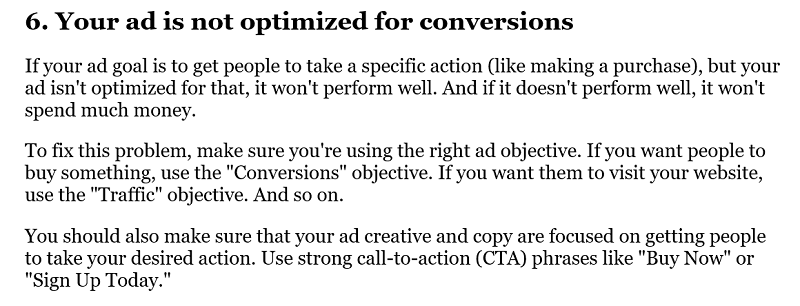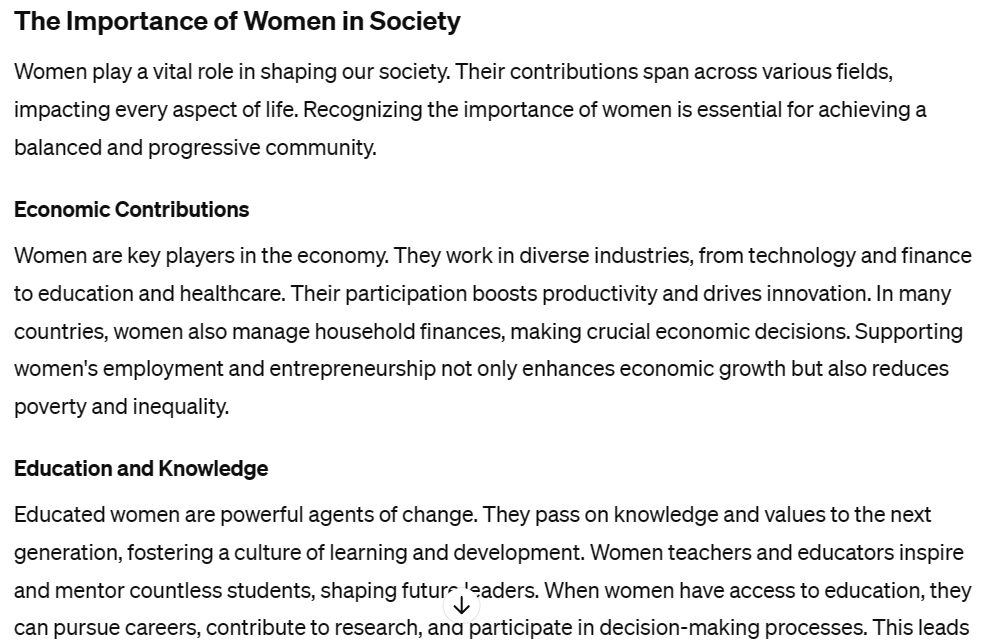Over the past year, I’ve cranked out over one million words of content in the form of articles, summaries, marketing copy, and so on. And in most cases, I read the output thoroughly to ensure it conformed perfectly to the prompt.
In the process of doing all of that, I became more and more familiar with how ChatGPT and other LLMs string words together and how the content they generate typically reads like.
And now, I can smell AI-generated content from a mile away unless it was crafted by a badass prompt engineer like me who has used a high-precision prompt that left zero traces of AI.
But even at that, I should find a few cues to raise my suspicion.
Signs of AI/ChatGPT-Generated Content

In this article, I’ll be sharing some of the telltale signs of AI-generated text.
So, if you’re looking to learn how to identify a piece of text generated with ChatGPT or some other AI tool, read on as I tell you the giveaway signs I look out for — from the glaring to the subtle ones.
1. Wordiness and Unnatural Words
AI writing tools tend to get caught up in overly complex words that make the content literally inaccessible to the target audience.
This is one of my easiest ways to tell if a piece of content was written with ChatGPT or any other AI writing tool.
Here are some examples from different web pages:
Sample 1:

Sample 2:

Sample 3:

These lines are not just filled with useless words that are no longer used commonly, but they also read quite awkwardly. You’ll hardly see a human writer in this age craft lines like these.
2. Certain “Signature” Words and Lines
Some words and lines have been so overused by ChatGPT and other LLMs that they’ve become foolproof indicators of AI-generated content.
Here are some of the words that usually scream “AI!!!”: Dive, delve, landscape, tapestry, navigate, dynamic, realm, embark, fast-changing, fast-paced, meticulous, intricate, utilize, furthermore, moreover, moreso, thus, complexity, and so on.
And here are some lines I commonly see in AI-generated content:
- “In the ever-changing/ever-expanding/ ever-growing/fast-paced/fast-moving/dynamic world of…” (usually the first line of the introduction or conclusion)
- “As we embrace/embark/navigate…” (usually in conclusions)
- “…can be a daunting task…”
- “In today’s world…”
- “Picture this:…” (used when trying to paint a scenario)
- “In conclusion…”
- “… is akin to…”
- “Fear not!”
Now, there’s this giveaway sentence structure that most reliably tells me, “AI wrote this!”. It usually goes like, “… is not just…; it’s…” or “…more than just…” or something similar. Usually, a semicolon is included within the line.
Here are some examples I found online:
- Integrating AI into your web development strategy is not just a trend; it’s a necessity for staying competitive in the digital landscape.
- In the dynamic landscape of web development, staying ahead of the curve is not just a choice; it’s a necessity.
- Basketball is more than just a sport; it’s a lifestyle.
- Investing in yourself is not just a choice; it’s a revolutionary act of empowerment.
- Taking action is not just a choice; it’s a responsibility.
- HR is not just a job; it’s a calling.
Did you notice the pattern? AI writing tools commonly use it for emphasis. So, when I see it, I smell AI immediately.
3. Discernible or Formulaic Patterns
When you observe that the paragraphs or sentences in a piece of writing follow a pattern that can be quite predictable, it’s AI-generated until proven otherwise.
See what I mean in the screenshot excerpts below, which were cropped out from the same article.



Did you notice how the first and second paragraphs under each of the three subheads start with the same set of words? Looks so artificial, right? That’s a massive sign that the piece was written by an AI tool.
4. Zero Human Touches
Another giveaway sign of AI-generated writing is the absolute lack of human touch.
The lines tend to follow a poetic pattern, with no signs of human input such as relevant transitional words, variations in sentence lengths, use of idioms and anecdotes in a few places, and so on.
Look at this example:

While the piece isn’t one I’ll describe as wordy, it’s quite bland because there are no human touches to help make it resonate better with the reader.
5. Unnecessary Repetitions
When you read a piece of content that seems to repeat the same sentences across multiple paragraphs, especially with a different set of words, it’s likely AI-generated.
AI writing tools tend to craft unnecessary repetitions. And this especially happens when you ask them to write a lengthy piece on a topic that has only a little information available or one that can be completely captured in only a few lines.
6. Other Giveaway Signs
While the signs mentioned above are the biggest ones you won’t miss in most pieces of AI writing, I’ve figured out many others that also give away a piece of content as AI-generated.
Although these additional signs might be less frequent, they expose AI writing nonetheless. And here are some of them:
Undeleted traces: It’s crazy when you see things like “…ChatGPT…” or “…as an AI model, I am unable to…” within a piece of content. There’s nothing wrong with using AI tools to craft your content, but it’s super dumb or lazy for anyone to leave those glaring traces undeleted.
The dangling participle: AI-generated writing is usually near-perfect in terms of grammar. But it sometimes uses the dangling participle. And when I see that in a piece that is otherwise grammatically perfect, it’s a red flag for AI-generated content. If you’re not sure what the “dangling participle” is, do a web search to read more on it. I won’t be able to explain that here.
My Take on AI Content Detectors
Many people use specialized web-based tools called AI content detectors to determine if a piece of content was generated with AI.
However, based on my experience with these tools, I won’t advise anyone to rely on them — for now, at least. Now, hear me out.
I recently copied a page from an e-book I wrote years ago entirely off of my head and experience. Then I ran the page through some of the popular AI content detectors. To my surprise, they all claimed that the content was partly AI-generated — like a 50:50 mix of some sort.
Imagine I’d submitted that to a college professor who decided to run it through the same tools. I’d be wrongly penalized for using AI even when I’d written the piece years before generative AI became a thing.
Before now, I used to recommend the guide below to whoever must use AI content detectors:
- If it says “human”, trust it 100%
- If it says “AI-generated” (90%+ likely AI), trust it but not absolutely.
- If it says mixed, tread with caution, as the content might be 100% human-written.
But then, I’ve seen some fairly new tools created to manipulate AI-generated content to make it undetectable by AI content detectors. And after testing some of these tools, I observed how perfectly they did the dirty job.
So, I changed my stand. At the time of this writing, here is my take on AI content detectors:
Avoid them as much as you can because they are presently not accurate and reliable enough for the purpose they were created for.
Wrapping Up
There you have it — some of the telltale signs of AI-generated content based on my experience. I also explained why I wouldn’t recommend using AI content detector tools.
So, if you work with a lot of written content and would like to figure out what was crafted using AI, the signs I’ve included in this article would help a lot.
Remember, as I stated earlier, with the use of advanced, high-precision prompts, AI can generate content that won’t contain any of these giveaway signs.
I’ve personally used AI to write pieces that read so human-like that you’d even argue that they were not written with AI. So, it only takes prompt expertise. I’m stating this, so you’d know that you might not be able to tell some AI-generated content.
On a final note, this article would be a work in progress. As I discover more signs, I’ll edit the article to include them. What other giveaway signs of AI-generated content do you know?
